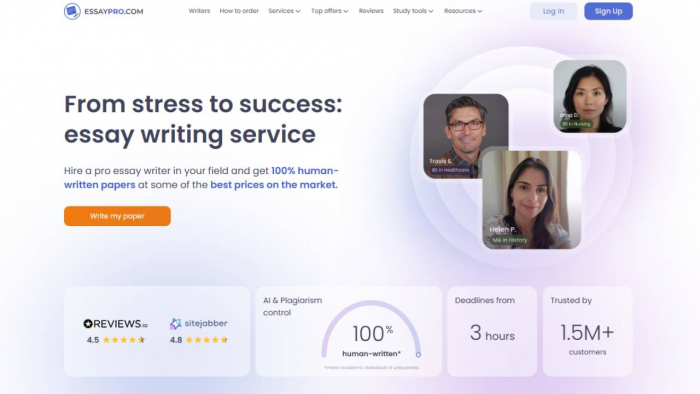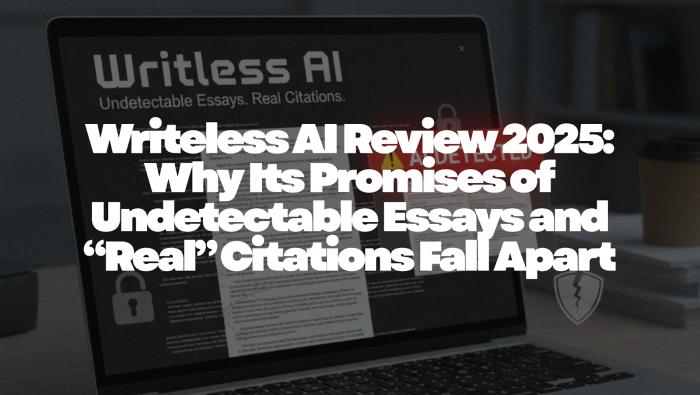The AI writing market is expanding fast, and Writeless AI has positioned itself as a specialized solution for academic work. It advertises two bold capabilities: long-form essays with real citations and content that can supposedly bypass AI detectors. For stressed students or busy professionals, that sounds dangerously appealing.
But when you look closely at user feedback and the platform’s observable output, Writeless AI struggles with almost everything it claims to do. This review examines whether the tool delivers genuine academic value or simply introduces more risk than it removes.

Writeless AI Rating Snapshot (1.5 out of 5)
| Evaluation Criteria | Score | Rationale |
|---|---|---|
| Content Quality and Coherence | 1.0 | Output often lacks structure, clarity, and basic grammar. |
| Undetectability (Core Claim) | 1.0 | Users report the content is frequently flagged by common AI detection tools. |
| Citations and Formatting | 2.5 | Supports multiple citation styles but often produces messy formatting. |
| Pricing and Value | 1.5 | Expensive subscription with no rollover and poor cost efficiency. |
| Customer Accountability | 1.5 | Reports of slow support responses and difficulty getting refunds. |
Overall Score: 1.5 out of 5
Most of the issues come down to reliability, trust, and execution.
Table of Contents
- The Core Failure: Claims vs Reality
- In-Depth Scrutiny of Quality and Formatting
- The Accountability Problem
- Competitive Landscape and Better Alternatives
- Final Verdict
Claims vs Performance Reality

Writeless AI markets itself as a tool built for students who need essays that look human-written and reference credible sources. In practice, the platform fails at both goals.
The AI Detection Myth
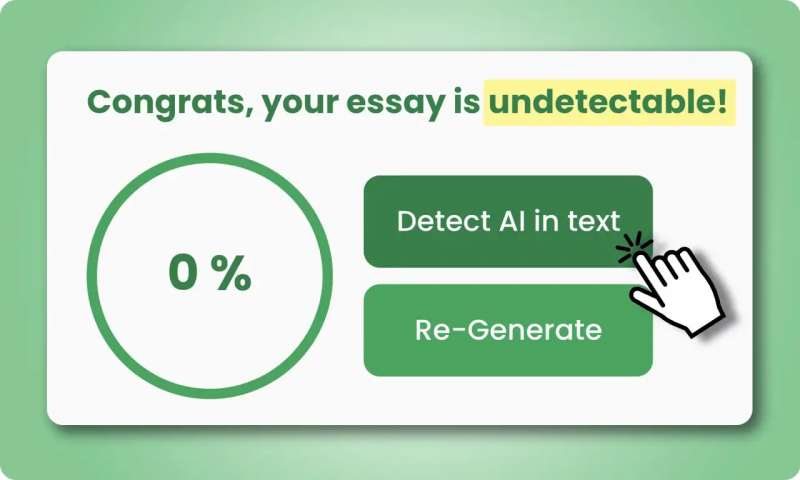
Writeless promotes itself as offering “undetectable” writing. Users repeatedly report the opposite. Most describe their tests showing the content is still flagged as AI-generated. Even casual detectors catch it, which makes the core selling point unreliable.
Because academic institutions increasingly use AI detection as part of their integrity policy, this failure makes the platform risky for exactly the people it claims to help.
Citations That Don’t Justify the Weak Writing
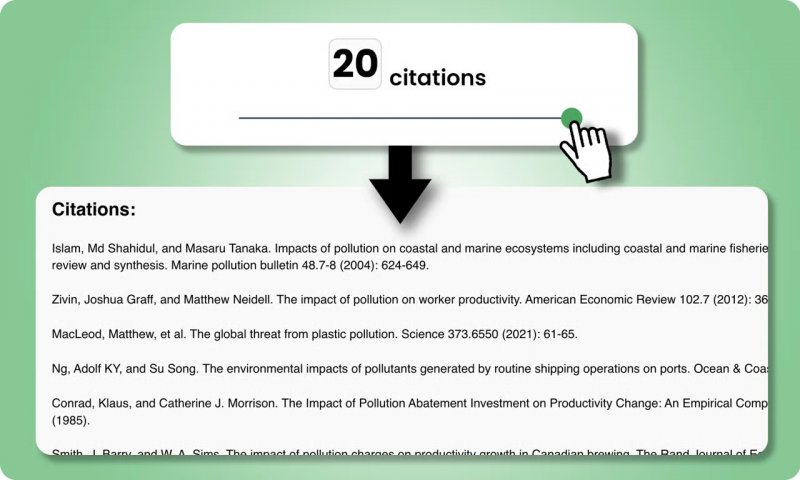
While the platform technically provides citations in recognized academic styles, the surrounding paragraphs often suffer from jumbled wording, awkward phrasing, and syntax issues. Users consistently describe the writing as messy or nonsensical, which negates the value of having proper references.
In short, even when the citations appear usable, the essay itself often isn’t.
In-Depth Scrutiny of Quality and Formatting
The core issue with Writeless AI is not that it lacks features. The problem is that the features don’t work well enough for academic standards.
Content Quality Is Too Weak for Academic Use
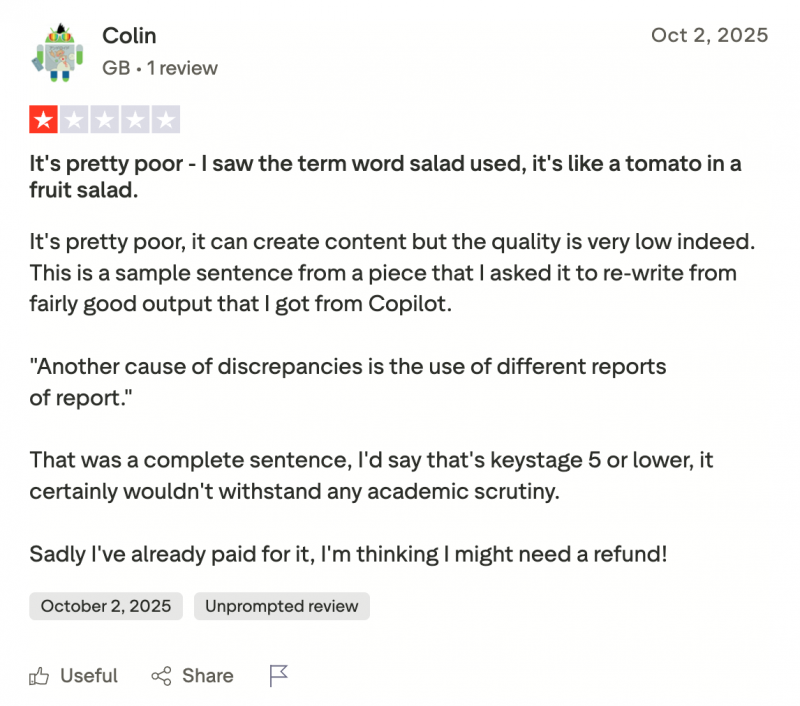
Across reviews, the same problems appear repeatedly:
- Sentences often read like poorly translated text
- Logical flow is inconsistent
- Arguments lack development
- Paragraphs feel repetitive or shallow
Some users go as far as describing the output as “word salad,” which suggests deeper problems with the underlying language model rather than simple surface issues.
Formatting Problems That Hurt Usability
For academic writing, formatting is half the battle. Writeless struggles here too:
- Random code-like characters appear in the text
- Subheadings are often ignored
- Paragraph spacing and structure become inconsistent
- Footnotes, when attempted, rarely produce clean results
For anyone submitting work formally, these issues mean significant manual rewriting or complete abandonment of the generated content.
The Accountability Problem: Pricing, Model, and Support
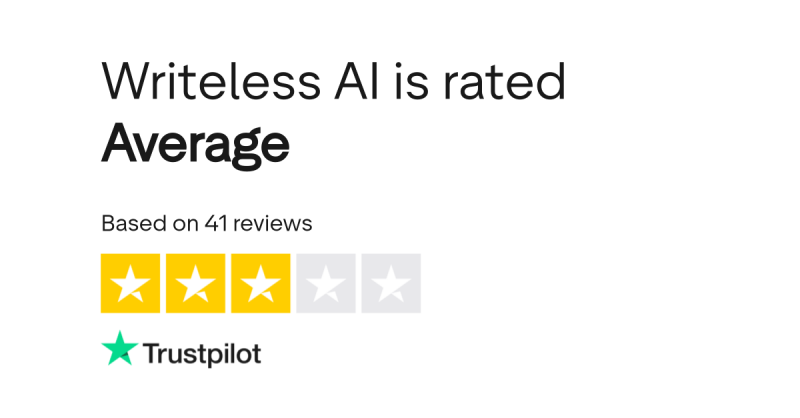
Beyond content quality, Writeless AI’s subscription setup and customer support raise concerns. (Read more)
A Pricing Model That Works Against the User
Writeless uses a recurring subscription with limited flexibility. Key issues include:
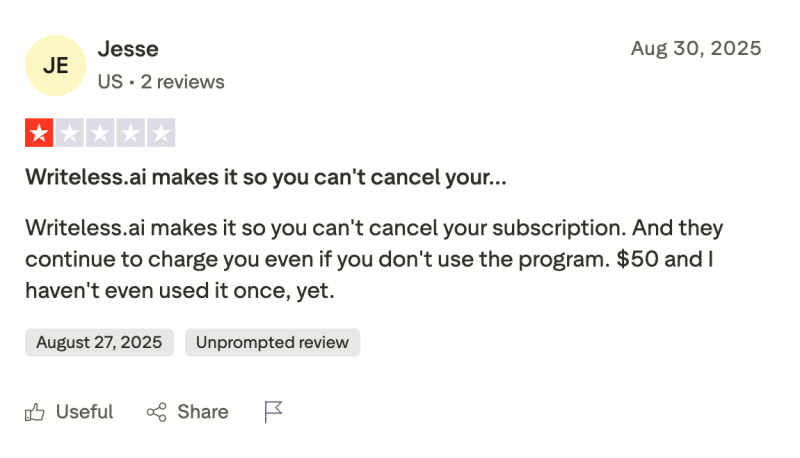
- No rollover of unused writing capacity
- Higher pricing compared to tools that produce better quality
- A free tier that is too limited to meaningfully test the tool
Users often mention feeling locked into a subscription before they fully realize the platform’s limitations.
Customer Support That Leaves Many Frustrated
This is one of the most common complaints:
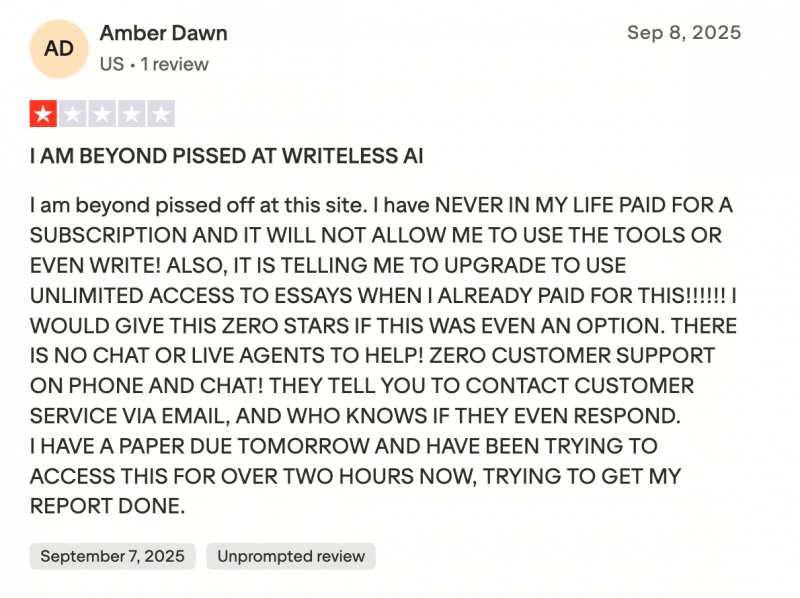
- Delayed support responses
- Generic replies that don’t address the issue
- Refund requests denied even after immediate cancellation
Many users describe the experience as feeling “ignored” or “dismissed,” which creates trust and accountability concerns.
Competitive Landscape and Stronger Alternatives
Despite the fast growth of AI writing tools, Writeless lags behind peers that offer better quality, stable performance, and fairer pricing.
Here’s a simplified comparison:
| Tool | Strength | Weakness |
|---|---|---|
| AIDetectPlus | Focused on humanizing content, credits never expire | Smaller brand presence |
| Jenni AI | Strong for academic research and citation insertion | Unlimited use requires a paid plan |
| Caktus AI | Good all-rounder for homework and multi subject tasks | Output quality varies by topic |
Each alternative delivers features that align more closely with student needs without relying on unrealistic promises of undetectability.
Final Verdict: Is it Worth the Risk?
Writeless AI is not a dependable academic writing tool in its current form. The content quality issues alone make it unsuitable for serious submissions, and its failure to avoid AI detection removes any value from its core pitch. Combined with a rigid subscription model and poor customer accountability, the risk of using this tool outweighs any potential benefit.
Final Recommendation:
Avoid the annual plan and consider more stable, transparent, and academically reliable alternatives. Writeless AI introduces more problems than it solves.
Post Comment
Be the first to post comment!
